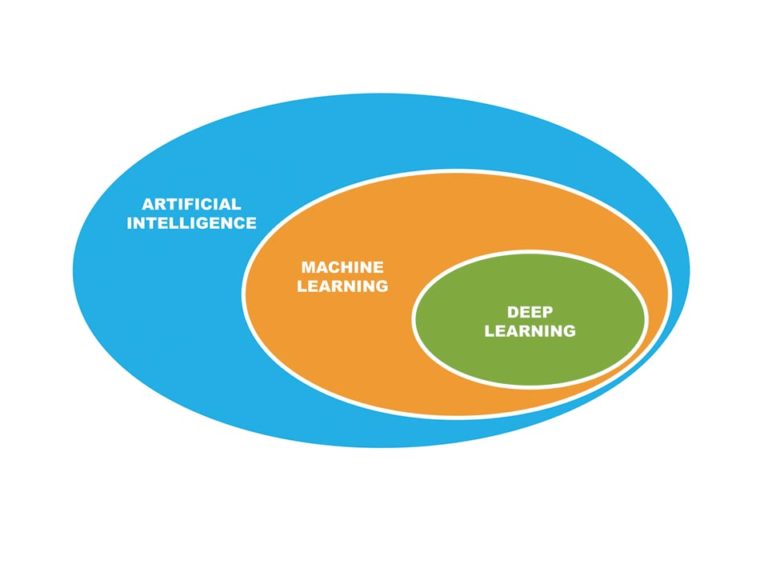Introduction
“Deep Learning” applications are nowadays the cutting edge branch of “machine learning”, the broader scientific branch of “artificial intelligence” that deals with how a computer system can learn. Companies have made bold “openings” in this direction, such as Google with the development of the “Google Brain Project” and the purchase of the startup “Deepmind”. Other big players in technology, social media and e-commerce, such as Ebay, Amazon, Facebook, Google, IBM, Microsoft and Twitter, are taking similar initiatives to build machine learning, artificial intelligence and predictive analytics”.
The last field refers to the processing of huge databases and information, usually with advanced statistical algorithms or machine learning, in order to detect any structures in the data and correlations that will allow more accurate predictions.

What does “machine learning” mean and how can one program a computer to “learn”?
For example, how do “smartphones” and tablets recognize our voice and allow us to dictate texts? How does the speller recognize what word we are trying to type in the sms we want to send, just by entering a few letters, often even with an error? How do automated (“robotic”) telephone service centers of banks or mobile telephony understand us?
The answer is, algorithmically or programmatically “very difficult”. However, thanks to high technology now, statistics and the science of machine learning, much easier.
The algorithms in our service
It is very difficult or complicated, even practically impossible, to build algorithms that describe in machines a lot of knowledge, even simple ones. For example, it is quite difficult to build an algorithm, a program that includes as data and parameters all the features of all cars ever built so that a computer can recognize car images. Although a car is relatively simple for us to visually recognize, when it comes time to describe it on a computer in such a way that it can recognize any car ever built, from any point of view, it is much more difficult than as it sounds. The reason is that the human brain learns more through deep learning methods, with examples, while algorithmic programming is based on describing a set of mathematical rules and procedures that may not be able to successfully describe an object on a computer and with great accuracy.
For example, a car has four wheels but it also has a stroller, so the configuration required in this case for the computer to distinguish between these objects leads to a very complex programming approach, at least algorithmically . In addition, to build a machine that “learns” like the human brain, we must know exactly how it works and how knowledge is acquired, something that has not yet been scientifically understood.
The “key” of the solution to the above problem is to learn with examples, a computer to distinguish various objects or ideas. We supply it with hundreds of thousands of images of objects (cars and others), along with the correct answer to what each image describes, and control how the system uses this experience to categorize some new images that we will show it. Our goal is to teach the machine by example, as we would teach a child to distinguish warm from cold, red from green or dog from cat. As we can understand, a “Deep Learning” type learning process, (Awad & Khanna 2015), requires a huge amount of information and computing power.
Implementation of Machine Learning
Financial Services: Banks and other financial companies use machine learning technology for two main purposes: tracking down important data information and preventing fraud.
Healthcare: Machine learning is a rapidly growing trend in the healthcare industry, thanks to the advent of portable devices and sensors that can use data to assess a patient’s health in real time.
Government: Government services, such as public safety and utilities, have a particular need to use machine learning, as they have many data sources that can be extracted for information.
Retail: Websites offer products that their customers may like based on their previous preferences, using machine learning to analyze their shopping history.
Transportation: Data analysis to identify patterns and trends is key to the transport industry, which relies on creating more efficient routes and anticipating potential problems, with the aim of increasing profitability.



